Alireza Javaheri
Meta-Learning in Spiking Neural Networks with Reward-Modulated STDP
Jun 07, 2023Abstract:The human brain constantly learns and rapidly adapts to new situations by integrating acquired knowledge and experiences into memory. Developing this capability in machine learning models is considered an important goal of AI research since deep neural networks perform poorly when there is limited data or when they need to adapt quickly to new unseen tasks. Meta-learning models are proposed to facilitate quick learning in low-data regimes by employing absorbed information from the past. Although some models have recently been introduced that reached high-performance levels, they are not biologically plausible. We have proposed a bio-plausible meta-learning model inspired by the hippocampus and the prefrontal cortex using spiking neural networks with a reward-based learning system. Our proposed model includes a memory designed to prevent catastrophic forgetting, a phenomenon that occurs when meta-learning models forget what they have learned as soon as the new task begins. Also, our new model can easily be applied to spike-based neuromorphic devices and enables fast learning in neuromorphic hardware. The final analysis will discuss the implications and predictions of the model for solving few-shot classification tasks. In solving these tasks, our model has demonstrated the ability to compete with the existing state-of-the-art meta-learning techniques.
Keypoint Cascade Voting for Point Cloud Based 6DoF Pose Estimation
Oct 14, 2022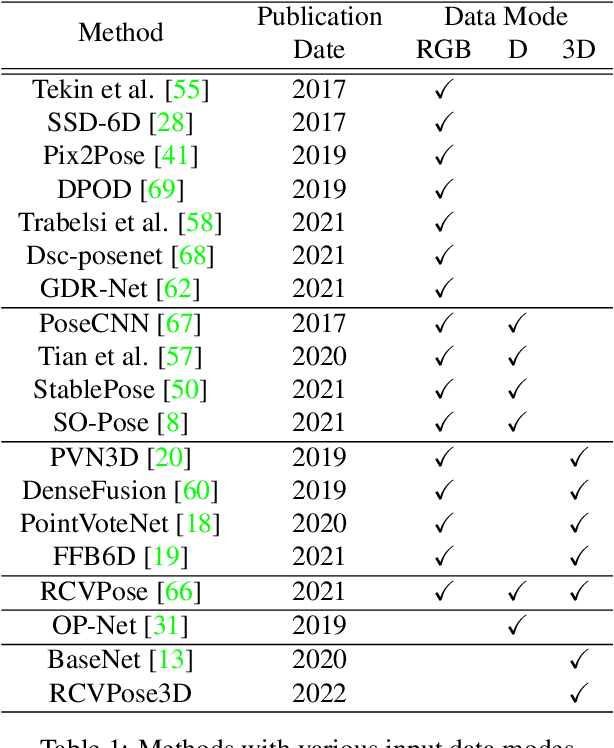
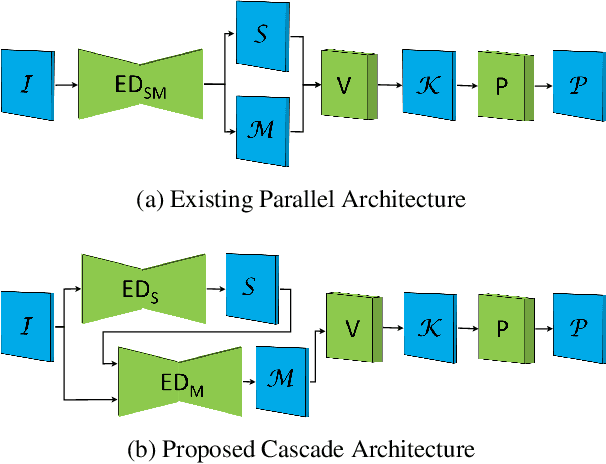
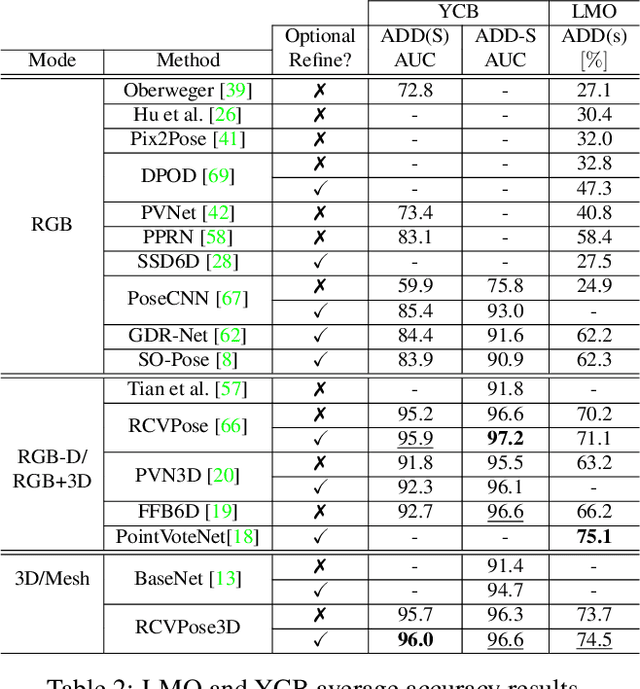

Abstract:We propose a novel keypoint voting 6DoF object pose estimation method, which takes pure unordered point cloud geometry as input without RGB information. The proposed cascaded keypoint voting method, called RCVPose3D, is based upon a novel architecture which separates the task of semantic segmentation from that of keypoint regression, thereby increasing the effectiveness of both and improving the ultimate performance. The method also introduces a pairwise constraint in between different keypoints to the loss function when regressing the quantity for keypoint estimation, which is shown to be effective, as well as a novel Voter Confident Score which enhances both the learning and inference stages. Our proposed RCVPose3D achieves state-of-the-art performance on the Occlusion LINEMOD (74.5%) and YCB-Video (96.9%) datasets, outperforming existing pure RGB and RGB-D based methods, as well as being competitive with RGB plus point cloud methods.
Joint Geometry and Color Projection-based Point Cloud Quality Metric
Aug 05, 2021
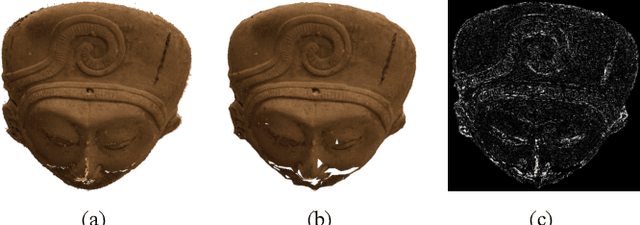
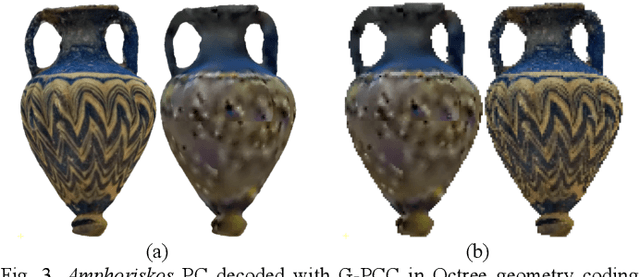
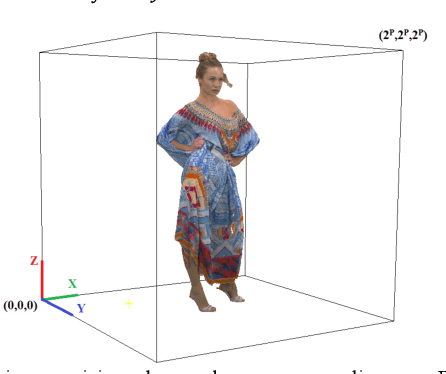
Abstract:Point cloud coding solutions have been recently standardized to address the needs of multiple application scenarios. The design and assessment of point cloud coding methods require reliable objective quality metrics to evaluate the level of degradation introduced by compression or any other type of processing. Several point cloud objective quality metrics has been recently proposed to reliable estimate human perceived quality, including the so-called projection-based metrics. In this context, this paper proposes a joint geometry and color projection-based point cloud objective quality metric which solves the critical weakness of this type of quality metrics, i.e., the misalignment between the reference and degraded projected images. Moreover, the proposed point cloud quality metric exploits the best performing 2D quality metrics in the literature to assess the quality of the projected images. The experimental results show that the proposed projection-based quality metric offers the best subjective-objective correlation performance in comparison with other metrics in the literature. The Pearson correlation gains regarding D1-PSNR and D2-PSNR metrics are 17% and 14.2 when data with all coding degradations is considered.
A Point-to-Distribution Joint Geometry and Color Metric for Point Cloud Quality Assessment
Jul 30, 2021



Abstract:Point clouds (PCs) are a powerful 3D visual representation paradigm for many emerging application domains, especially virtual and augmented reality, and autonomous vehicles. However, the large amount of PC data required for highly immersive and realistic experiences requires the availability of efficient, lossy PC coding solutions are critical. Recently, two MPEG PC coding standards have been developed to address the relevant application requirements and further developments are expected in the future. In this context, the assessment of PC quality, notably for decoded PCs, is critical and asks for the design of efficient objective PC quality metrics. In this paper, a novel point-to-distribution metric is proposed for PC quality assessment considering both the geometry and texture. This new quality metric exploits the scale-invariance property of the Mahalanobis distance to assess first the geometry and color point-to-distribution distortions, which are after fused to obtain a joint geometry and color quality metric. The proposed quality metric significantly outperforms the best PC quality assessment metrics in the literature.
Public vs Media Opinion on Robots
May 05, 2019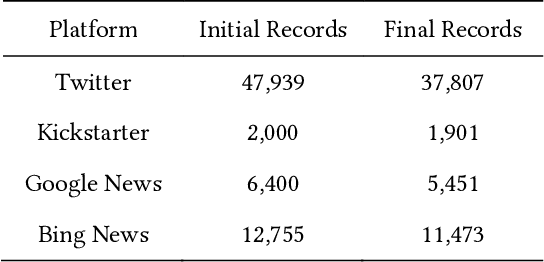
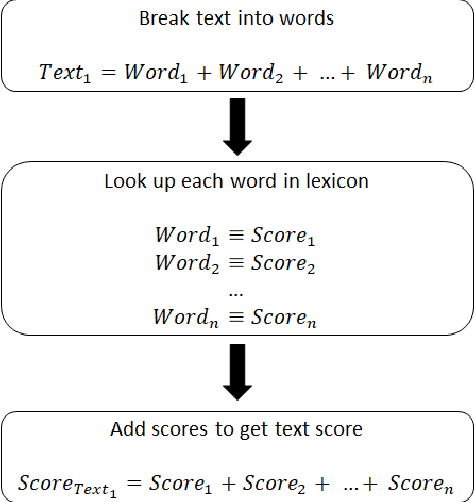
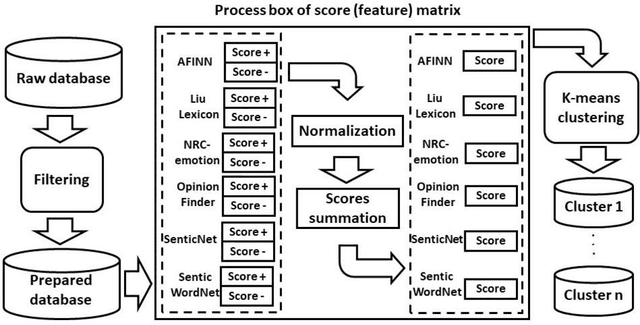
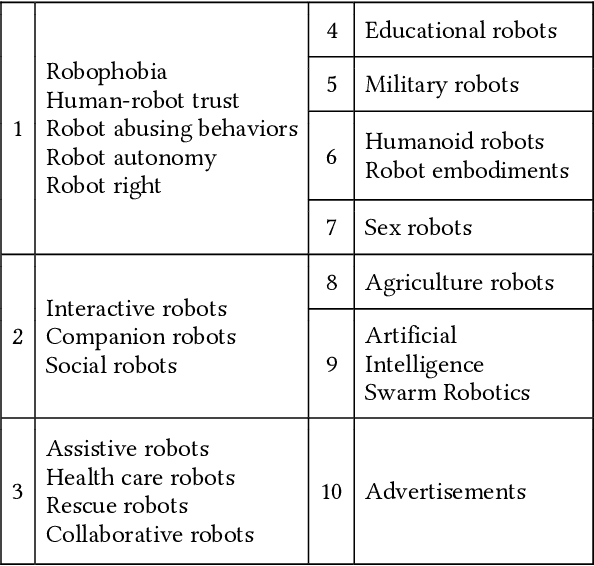
Abstract:Fast proliferation of robots in people's everyday lives during recent years calls for a profound examination of public consensus, which is the ultimate determinant of the future of this industry. This paper investigates text corpora, consisting of posts in Twitter, Google News, Bing News, and Kickstarter, over an 8 year period to quantify the public and media opinion about this emerging technology. Results demonstrate that the news platforms and the public take an overall positive position on robots. However, there is a deviation between news coverage and people's attitude. Among various robot types, sex robots raise the fiercest debate. Besides, our evaluation reveals that the public and news media conceptualization of robotics has altered over the recent years. More specifically, a shift from the solely industrial-purposed machines, towards more social, assistive, and multi-purpose gadgets is visible.
 Add to Chrome
Add to Chrome Add to Firefox
Add to Firefox Add to Edge
Add to Edge